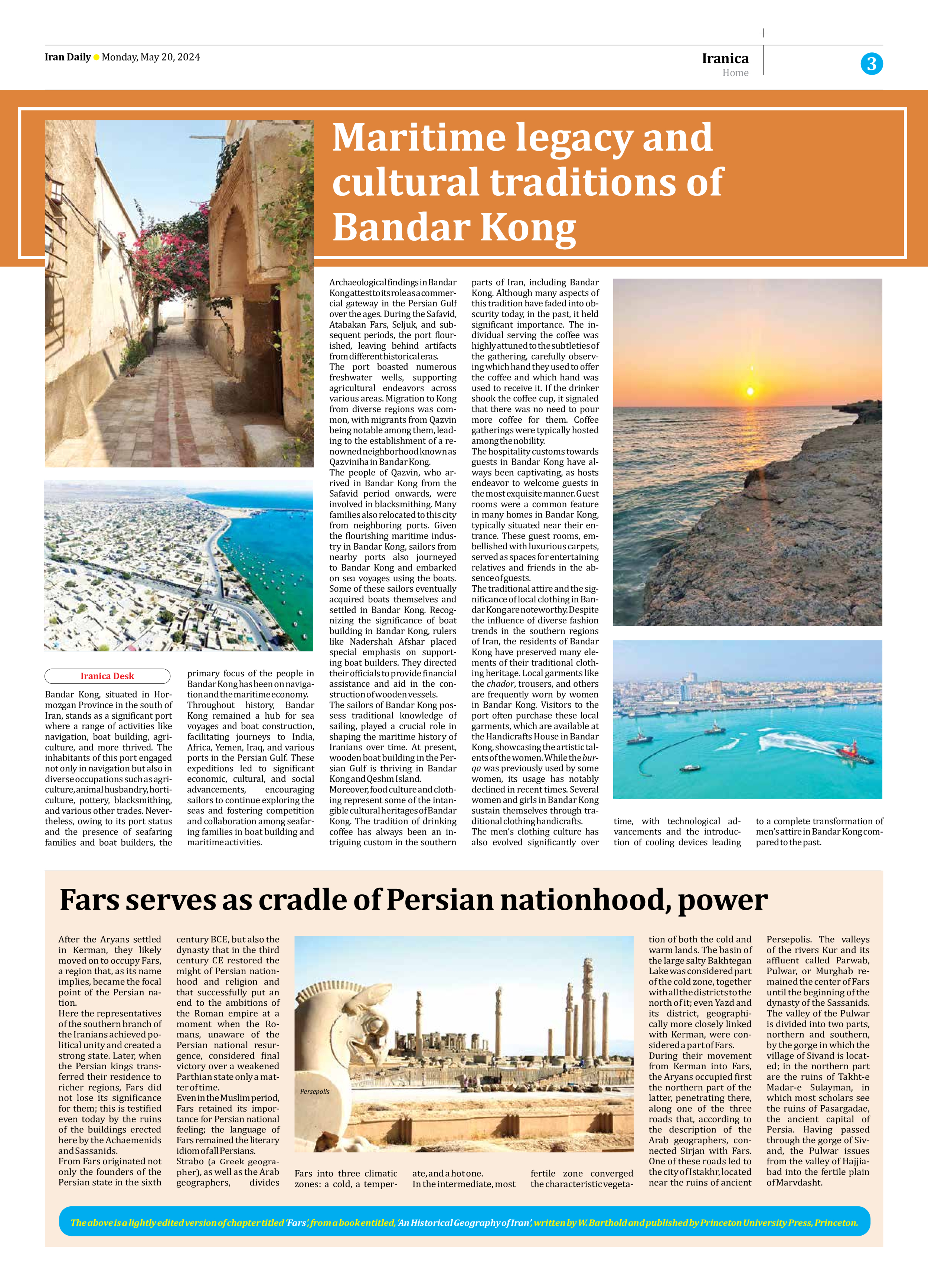
Fars serves as cradle of Persian nationhood, power
After the Aryans settled in Kerman, they likely moved on to occupy Fars, a region that, as its name implies, became the focal point of the Persian nation.
Here the representatives of the southern branch of the Iranians achieved political unity and created a strong state. Later, when the Persian kings transferred their residence to richer regions, Fars did not lose its significance for them; this is testified even today by the ruins of the buildings erected here by the Achaemenids and Sassanids.
From Fars originated not only the founders of the Persian state in the sixth century BCE, but also the dynasty that in the third century CE restored the might of Persian nationhood and religion and that successfully put an end to the ambitions of the Roman empire at a moment when the Romans, unaware of the Persian national resurgence, considered final victory over a weakened Parthian state only a matter of time.
Even in the Muslim period, Fars retained its importance for Persian national feeling; the language of Fars remained the literary idiom of all Persians.
Strabo (a Greek geographer), as well as the Arab geographers, divides Fars into three climatic zones: a cold, a temperate, and a hot one.
In the intermediate, most fertile zone converged the characteristic vegetation of both the cold and warm lands. The basin of the large salty Bakhtegan Lake was considered part of the cold zone, together with all the districts to the north of it; even Yazd and its district, geographically more closely linked with Kerman, were considered a part of Fars.
During their movement from Kerman into Fars, the Aryans occupied first the northern part of the latter, penetrating there, along one of the three roads that, according to the description of the Arab geographers, connected Sirjan with Fars. One of these roads led to the city of Istakhr, located near the ruins of ancient Persepolis. The valleys of the rivers Kur and its affluent called Parwab, Pulwar, or Murghab remained the center of Fars until the beginning of the dynasty of the Sassanids. The valley of the Pulwar is divided into two parts, northern and southern, by the gorge in which the village of Sivand is located; in the northern part are the ruins of Takht-e Madar-e Sulayman, in which most scholars see the ruins of Pasargadae, the ancient capital of Persia. Having passed through the gorge of Sivand, the Pulwar issues from the valley of Hajjiabad into the fertile plain of Marvdasht.







